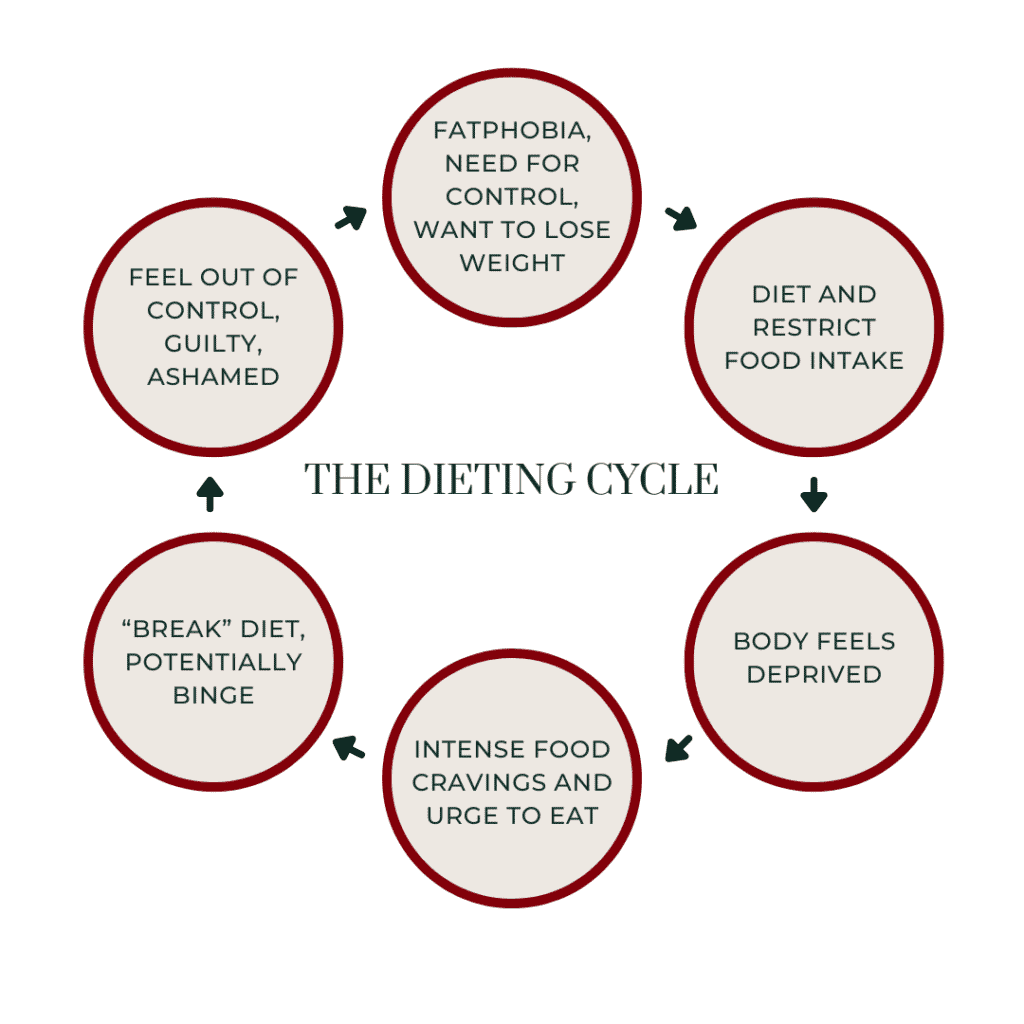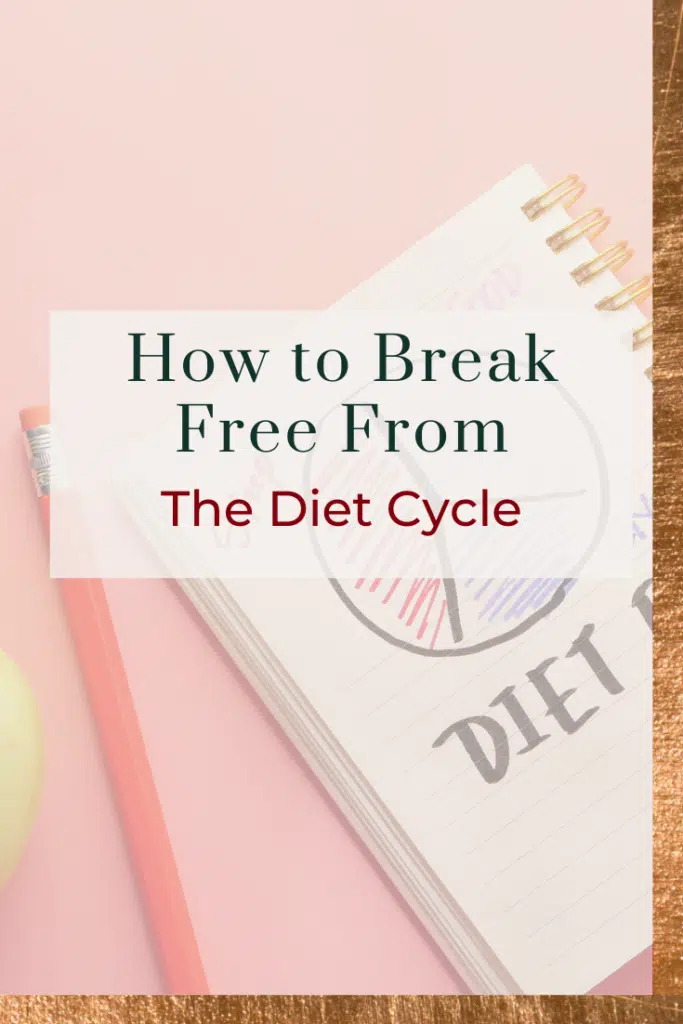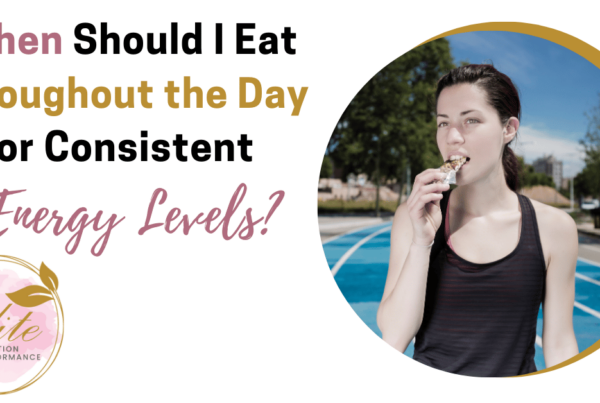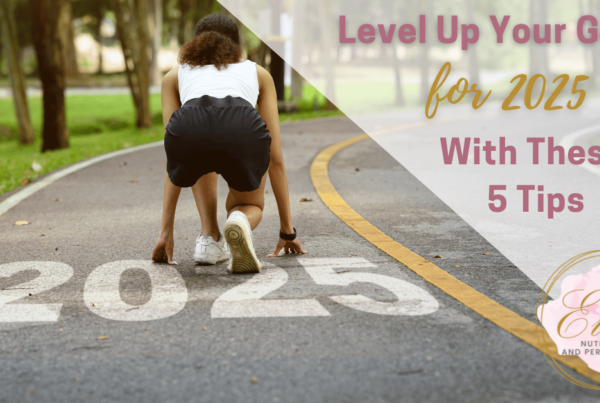If you have been trapped in the diet cycle and aren’t sure how to get out – this post is for you! Read on to learn more about the reasons why you get trapped in this cycle (hint: it has nothing to do with willpower!) and steps you can take to get out of the diet cycle.
This post includes excerpts from my book Unapologetic Eatingwhich you can order on Amazon (hardcover, ebook, and audiobook versions available) or support independent bookstores by ordering on Indiebound.
Every person I know who has dieted (even if not on a “formal” diet) has recounted going through the same diet cycle.
They describe swinging between two states, either:
1. Being disciplined, eating “really well”, not binging, and sticking to “healthy” eating.
Or…
2. Feeling completely out of control, eating “whatever”, often with a sense of “F it, the day is screwed up already, might as well keep going”.
If this sounds familiar, you are not alone! And – spoiler alert – being stuck in the diet cycle is not your fault, and there is hope. Keep reading to find out how you can get out of the diet cycle and find a way of eating that feels sustainable and works for the long term.
What is the Diet Cycle?
The diet cycle describes the experience of cycling through periods of restrained eating – dieting or food restriction of some sort – followed by periods of disconnected eating and feeling out of control around food. The diet cycle is almost always accompanied by feelings of guilt (“I shouldn’t have eaten xyz food”) and shame (“I can never stick to a diet, what is wrong with me?”).

The cycle typically starts when you receive a message that something is “wrong” with your body and you feel, or are told, that the way to “fix” it is by losing weight. So you restrict food intake in some way (i.e. count calories or macros or carbs, go on a specific diet, limit certain foods or food groups, etc.).
Now, this often works for a little while. You may feel more in control and less anxious. For many people, the structure of food rules or having a type of guide to follow makes them feel safe.
But then at some point, you lose that control and “break” the diet – maybe it’s a binge, maybe it’s not. Whatever it looks like or feels like, for most people, this is generally a disconnected eating experience where they feel out of control and are eating an amount of food and/or type of food that makes them feel uncomfortable.
This then leads to feelings of guilt or shame. Perhaps you feel out of control and like you “messed up” or “failed”. So, to regain control and get back on the wagon, you start dieting and restricting again.
Which then works for a little while (although usually less and less time each time you go through the cycle), before your body feels deprived, you “break” the diet, experiencing binging or some type of disconnected eating, followed again by guilt and shame
And round and round you go.
Here’s an example of what this might look like:
You decide to cut back on sugar and plan to “allow” yourself to have sweets only on occasion. You get rid of all the sugar in your house and stock up on all sorts of “healthy” food and dessert alternatives. For a few weeks, everything goes great, and you’re able to stick to these rules.
Then, you start to notice more cravings for ice cream, cookies, and candy. You try to eat a “healthier” version, but the craving doesn’t go away.
Finally, you break down and buy a pint of ice cream and eat it all in one sitting. Afterward, you feel guilty, ashamed, and down on yourself and vow that you’ll never eat any sugar again.
Why Do We Get Stuck in the Diet Cycle?
The short answer: Your body is trying to protect you, and your body is wired for survival.
The long answer: When you restrict or limit certain types of food or cut back on the amount of food you eat, your body gets the message that you are starving, so it switches into survival mode.
It doesn’t matter if you are food secure and have plenty of food to feed you for weeks on end. Your body is still biologically wired as it was centuries ago when food was scarce (not by our ancestor’s choice). At that time, the ability to burn fewer calories and store extra calories was a genetic survival mechanism. It kept humans alive!
Fast forward to today: to your body, any kind of dieting or restrained eating feels like deprivation and starvation.
This happens even if you are not actively dieting. I see this a lot with people who are not technically on a diet, but are still thinking like dieters. That is, still conscious of everything they’re eating, still judging their food choices, still feeling guilty when they think they’ve eaten something they “should’t have” or have eaten “too much”. While you might not be “traditionally” dieting, your body is still getting the message that deprivation is coming – that starvation is on the horizon.
Now, unsurprisingly, your body doesn’t want you to starve, or die, so it responds by:
- Increasing your appetite
- Decreasing your fullness signals
- Increasing your cravings, especially for energy-dense foods like those high in sugar and fat.
This is the point of the diet cycle where you get more intense food cravings and it feels harder and harder to “stick” to your eating plan, leading you to “break” the diet, feel out of control, and eat all the things that have been off-limits.
Interestingly enough, we see very similar eating behaviors between dieters and people who suffer from food insecurity, those who don’t have consistent access to affordable, nutritious food. Several studies have shown that people with food insecurity have an increased likelihood of eating disorders and binge-eating behaviors. This is another example of our bodies trying to protect us from famine, whether it’s due to a diet or financial instabilty and a lack of access to food.
Now let me be clear: This isn’t your fault—it is the fault of the diet, the restriction, and the deprivation. Your biological system makes it nearly impossible to eat less than you need, willpower or not.
The way to get out of the diet cycle: let go of restriction and stop trying to control your eating.
When you do this, your body can move out of its feast or famine mode and you can break free from the diet cycle.
How to Break Free From the Diet Cycle
Instead of dieting and trying to control, restrict, or restrain your food intake, practice giving yourself permission to eat what you want.
This may sound scary – and counterintuitive – but remember, the reason you are in the dieting cycle and feel out of control around food is because of the restriction and rules. Once we take the restriction away – and replace it with permission – this allows for a rebuilding of body trust and food habituation.
You were born with the innate ability to trust your body. Your body intuitively knows what it is that you need. Although that trust may have been eroded through years of disconnection from your body’s wants and needs, you can rebuild it.
In practice, body trust includes the following aspects:
- Becoming in tune with your body’s subtle and not-so-subtle cues
- Honoring your hunger by consistently eating enough
- Eating satisfying foods
- Giving yourself unconditional permission to eat
- Allowing yourself to feel pleasure from food, without a side of guilt
- Respecting and taking care of your body
When you eat consistently, and enough, throughout the day, over time your body stops fearing starvation and allows your hunger and fullness cues to settle.
When you allow yourself to eat all sorts of foods and keep these foods around you, over time they become less exciting, and the desire to eat them diminishes.
One of my clients went through this with bagels, a food that she had loved but kept off-limits because she had been taught that carbs were “bad” and when she had bagels she could never stop eating and often ate to the point of being uncomfortably full. During our work together, she decided to permit herself to eat bagels whenever she wanted so she could work on habituating to them.
When you unlink emotions like guilt, fear, and shame to food, your body’s stress response decreases and your eating experience will be more satisfying and fulfilling (not to mention, you’ll be less likely to experience any gastrointestinal side effects or indigestion).
When you eat foods that taste good and are satisfying and pleasurable, you’ll be able to naturally reach – and notice – the point at which you feel “done” eating.
When a certain food becomes familiar and is not kept off-limits, and you know you can eat it whenever you want, it becomes less compelling. You get used to knowing it will be there today, tomorrow, and the next day, and it gives you the space to eat and enjoy the food without scarcity thoughts like, “I better enjoy this now; starting tomorrow, it’s back to eating clean.” Because remember, it’s thoughts like that that keep you in the diet cycle.
Intuitive Eating and The Diet Cycle
The intuitive eating framework is made up of 10 principles that work in tandem to help you get free from the diet cycle and find a place of balance, a way of eating that honors your body cues and nourishes you physically, mentally, and emotionally.
If you’re looking for more support in breaking free from the dieting cycle, check out my intuitive eating course. It’s designed to help you get out of the diet cycle, reconnect to your body cues, and stop feeling out of control around food, so that you can free up brain space and energy to focus on the things that really matter to you.
My team and I also provide virtual nutrition therapy and coaching serviceswhere we can support you in breaking free from the diet cycle and healing your relationship with food and your body.








